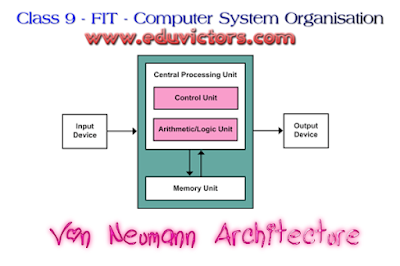Computer System Organisation
Very Short Answer Type Questions
Q1: Name the most commonly used input device.
Answer: Keyboard is the most commonly used input device, which can also be used to type commands directing the computer to perform certain actions.
Q2: Explain the main advantage and disadvantage of an OCR?
Answer: The main advantage of an OCR is the ability to scan the characters accurately. The disadvantage of an OCR is the limited number of characters offered by it.
Q3: Why do we use a webcam?
Answer: A webcam is basically used for capturing a series of digital images that are transferred by the computer to a server and then displayed to the hosting page.
Q4: Name the memory (Primary/Secondary)with the following features:
- If the current is interrupted, data is lost.
- Before a program is ready to run, the program is loaded into this memory, which allows the CPU to directly access the program.
Answer: RAM because it has above-given features.
Q5: Write any one advantage of cache memory.
Answer: The main advantage of cache memory is that if needed data is found in a cache, the CPU does not have to use mother¬board’s system bus for data transfer and processing gets fast.
Q6: Which disc is created using a laser beam?
Answer: CD-ROM disc is created using a laser beam.
Q7: Give one difference between primary and secondary memory.
Answer: The primary memory is volatile and has limited storage capacity, whereas secondary memory is non-volatile and can store huge amount of data.
Q8: Arrange the following memory units in ascending order of their storage capacities: Kilobyte, Byte, Terabyte, Megabyte, Gigabyte, Geopbyte
Answer: The ascending order of memory units is Byte, Kilobyte, Megabyte, Gigabyte, Terabyte, Geopbyte.
Q9: Where can a memory card be used?
Answer: Memory card can be used in digital camera, cell phones, camcorders, portable audio players, video players, PDAs, gaming consoles, laptops, printers etc.
Q10: Define the term byte. Differentiate between a bit and a byte.
Answer: A Byte is a unit of measuring computer storage. The binary digit is called bit in short. There are only two binary digits 0 and 1, whereas a combination of 8 bits is called a byte.
Q11: Name the theoretical model architecture on which almost all modern computer systems are based? Name the four subsystems of a computer based on this model?
Answer: Von Neumann Architecture (1946)
Four subsystems are: Memory, Input-output System, Arithmetic Logic Unit (ALU) and Control Unit (CU)
Q12: Give two examples of Direct Access Storage Devices (DASD).
Answer: DVD, Hard Disk.
Q13: Give an example of Sequential Access Storage Device (SASD).
Answer: Tape Drive.
Q14: Write the full form of the following abbreviated terms:
(a) OMR
(b) OCR
(c) RAM
(d) ROM
Answer:
(a) OMR - Optical Mark Recognition
(b) OCR - Optical Character Recognition
(c) RAM - Random Access Memory
(d) ROM - Read Only Memory
Q15: Define CPU
Answer: CPU stands for Central Processing Unit, which is a digital device that can perform a computation involving multiple steps.
☛See also:
FIT Sample Question Paper (2011-12)
FIT Sample Question Paper (2010-11)
FIT - Basics Of Computer Systems (MCQs)
FIT - Internet Basics (Very Short Q & A)
Ch1 - Convergence Of Technologies (Very Short Q & A)
Ch2 - Computer System Organisation (Worksheet)

No comments:
Post a Comment
We love to hear your thoughts about this post!
Note: only a member of this blog may post a comment.